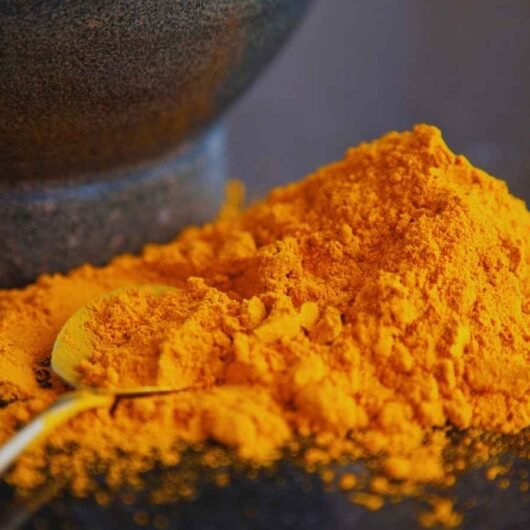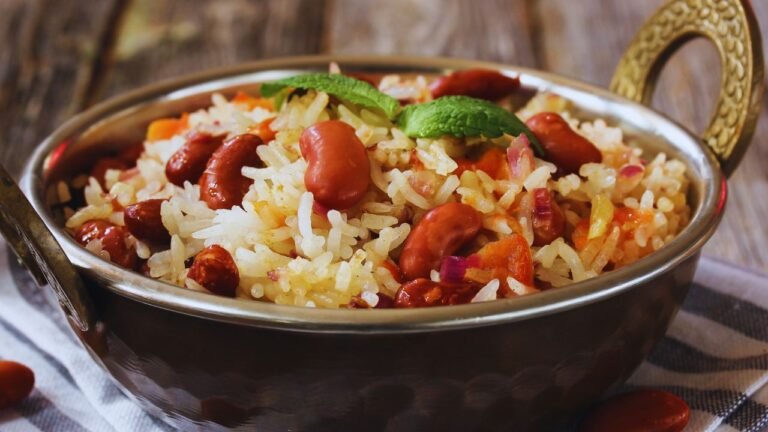How to Make a Curry Spice Recipe from Scratch: A Beginner’s Guide
Homemade curry powder brings better flavor than store-bought options. You can control heat levels and taste priorities when you make it yourself. Many home cooks find that their own signature curry spice blend creates more authentic and flavorful dishes.
This detailed piece shows you how to make curry spice from simple ingredients at your local grocery store. You’ll learn about spice selection, proper mixing techniques, and storage methods for homemade curry powder. The guide covers regional variations, customization options, and practical ways to use your fresh spice blend in dishes of all types.
Understanding Curry Spices

Curry spices create a mixture of flavors that changes substantially in various cultures and regions. Knowledge of these aromatic ingredients helps you create authentic curry spice recipes at home.
Common spices used in curry powder
A traditional curry powder blends several spices that create its unique flavor profile. The base mix has:
- Turmeric – Gives the signature yellow color and bitter undertones
- Coriander – Adds a refreshing, sweet note
- Cumin – Brings a bold, lemony taste
- Ginger – Creates a spicy-sweet flavor
- Cardamom – Adds warm, peppery notes
- Fenugreek – Gives a sweet, licorice-like taste
- Black Pepper – Adds mild heat and depth
Flavor profiles of key ingredients
Every spice in a curry blend plays a unique role in creating the overall flavor profile. Turmeric forms the backbone and provides both color and earthy undertones. Coriander and cumin create a perfect partnership – coriander brings sweetness while cumin adds warmth and depth. Ginger’s spicy brightness enhances the deeper notes that cardamom and black pepper contribute.
Fresh spices produce more vibrant flavors than their pre-ground counterparts. Indian families often create their own spice blends instead of using pre-mixed combinations. This hands-on approach gives them better control over their curry’s flavor intensity and balance.
Regional variations in curry blends
Each region has created its own distinctive curry spice combinations through centuries of tradition. Indian curry spices show substantial regional differences. North Indian blends feature coriander, cumin, cinnamon, and cardamom that create rich, aromatic profiles. The South Indian versions rely on mustard seeds, fenugreek, and curry leaves to produce spicier combinations.
Jamaican curry powder has a unique character. The blend includes allspice and scotch bonnet peppers that create heat profiles unlike any Indian variations. Thai curry takes a different approach and uses lemongrass and galangal. These curries often include coconut milk to create a creamy, sweet undertone that balances the spice perfectly.
South India’s popular Madras curry powder packs extra heat from added chili powder. Garam Masala offers a different experience with its complex mixture of cinnamon, cardamom, cloves, and nutmeg. This blend creates a warming sensation rather than intense heat.
Gathering Your Ingredients

The perfect curry spice blend starts with gathering quality ingredients. You need the right spices that blend well to create your own curry powder at home.
Simple Spices You Need for a Curry Blend
A perfect curry powder needs specific ingredients that create its signature taste. These core spices are the foundations of any good curry mix:
- Turmeric – This golden spice gives curry its yellow color
- Ground Coriander – The backbone spice used generously in the mix
- Ground Cumin – Brings rich earthiness and depth
- Ground Ginger – Adds a warm, spicy kick
- Cinnamon – Creates sweet, warming undertones
- Black Pepper – Delivers a gentle heat with complex notes
- Cardamom – Adds fresh, floral hints
Optional add-ins for customization
Homemade curry powder shines through its flexibility. A cook’s creativity can transform this basic blend with many more spices based on taste preferences and desired flavors:
Spice Flavor Contribution Cayenne Adds heat level Fennel Seeds Sweet, licorice notes Mustard Powder Tangy, sharp flavor Garlic Powder Savory depth Nutmeg Warm, sweet undertones Sourcing high-quality spices
The quality of ingredients affects the final curry powder by a lot. Several factors come into play at the time you source your spices:
Freshness Matters: Spices keep their peak flavor for about six months. Stores with high turnover will give a better chance of fresh ingredients.
Organic Options: Most cooks choose organic spices that farmers grow without synthetic pesticides and fertilizers. These spices pack more intense flavors and support eco-friendly farming.

Whole vs. Ground: Pre-ground spices might save time, but whole spices hold their flavors longer and let you control the final blend better. You’ll get optimal results if you grind whole spices right before mixing.
Storage Considerations: Make sure you have proper storage containers ready before buying. Airtight glass jars shield spices from moisture and keep them potent.
Specialty Sources: Indian grocery stores sell authentic spices that cost less than regular supermarkets. These stores stock a broader range of spices you need for curry powder.
Quality ingredients make all the difference in your final product. A thoughtfully sourced spice collection creates curry powder that beats commercial options in freshness and flavor intensity.
Mixing Your Curry Powder

Mixing curry powder needs precise measurements and careful attention to create the perfect flavor blend. A well-mixed curry powder starts with exact ingredient portions. The grinding techniques and proper storage methods work together to keep the spice mixture fresh and aromatic.
Proper ratios for a balanced blend
A balanced curry powder needs the right mix of spices. The basic recipe follows these proportions:
Base Spices Proportion Coriander 2 tablespoons Cumin 2 tablespoons Turmeric 2 teaspoons Cardamom 2 tablespoons Additional spices (ginger, cinnamon, clove) 1/4 to 1/2 teaspoon each The spice level can be adjusted to your personal priorities by changing the amount of cayenne or chili. Many cooks add extra coriander since it creates the signature flavor in most curry powder blends.
Grinding whole spices vs. using pre-ground
Fresh grinding makes the most important difference in curry powder preparation compared to pre-ground spices. Whole spices contain oils with flavonoids that release during grinding but evaporate faster afterward. These oils add depth and complexity to the final blend.
Benefits of grinding whole spices:
- Rich flavor profile with better aromas
- Spices stay fresh longer before grinding
- No artificial additives or fillers
- You control the texture and consistency
A spice grinder or coffee grinder helps process whole spices effectively. Many spices taste better when lightly toasted before grinding, especially when you have cumin, coriander, and cardamom. This method releases their oils and enhances their flavors.
Storing your homemade curry powder
Storage methods can substantially affect how long your homemade curry powder stays fresh and flavorful. Your curry powder’s shelf life depends on how you prepare it:
- Freshly ground whole spices keep their best flavor for up to 3 months
- Pre-ground spice blends last about 6 months
- Whole spices stay fresh for up to a year with proper storage
Your curry powder needs an airtight container in a cool, dark spot to stay fresh. Glass containers work better than plastic because they don’t hold onto smells or change your spice blend’s taste. Heat, light, and moisture will make flavors fade faster, so keep your blend away from the stove and sunlight.
You’ll need to mix your spices well to get an even blend. A food processor works great for bigger batches, but a whisk does the job for smaller amounts. The spices should blend together smoothly so no single flavor stands out too much.
Let your whole spices cool down after toasting before you grind them. This step will keep moisture from building up in your storage container and helps your powder stay fresh without clumping. Making smaller batches means you’ll mix more often, but your blend will stay potent and fresh until you use it all.
Using Your Homemade Curry Powder

A dash of homemade curry powder changes simple dishes into delightful culinary creations. The aromatic blend’s proper use and adjustment creates endless cooking possibilities.
Incorporating into dishes of all types
Homemade curry spice works best when mixed with liquids that bring out its full flavor. Here are the quickest ways to use it:
Base Liquid Integration:
- Coconut milk or yogurt creates creamy curries
- Stock or broth makes flavorful soups and stews
- Oil blends create perfect marinades and dressings
The curry powder’s best flavors emerge when you add it at the start of cooking. Heat it in oil or liquid and the spices will release their natural oils. This creates deeper, more complex flavors in your dish.
Dish Type Recommended Amount Cooking Method Soups/Stews 1-2 tablespoons per quart Add to sautéed vegetables Marinades 1 tablespoon per cup Mix with oil and acidic ingredients Rice Dishes 1 teaspoon per cup Add to cooking liquid Roasted Vegetables 1 teaspoon per pound Toss with oil before roasting Adjusting heat and flavor to taste
A homemade curry powder shines through its versatility. You can easily tweak the blend’s intensity and character to match different taste preferences.
To Turn Up The Heat:
- Sprinkle more cayenne pepper gradually
- Add fresh chilies as you cook
- Mix extra black pepper into the blend
To Create Milder Flavors:
- Mix with coconut milk or cream
- Stir in a touch of sugar or honey
- Use more coriander in your blend
You can adjust the spice levels while cooking. Dairy products like yogurt or cream help tame the heat and preserve the curry’s complex flavor profile.

Recipe ideas featuring your curry blend
Your homemade curry powder can do way beyond traditional curry dishes. Let me share some creative ways to use it:
Quick Meals:
- Curried chicken salad with mayo and grapes
- Spiced butternut squash soup
- Curry-roasted cauliflower
- Coconut curry shrimp
International Fusion:
- Thai-inspired coconut curry noodles
- Moroccan-style chickpea stew
- Indian-spiced roasted vegetables
- Caribbean curry chicken
Mix the curry powder with olive oil or vinaigrette to spread the flavors in your salads and cold dishes. Your proteins need at least an hour to soak up all the flavors when you use the blend in marinades.
This blend really shines in slow-cooked dishes. The spices get time to develop and blend together perfectly. Want a quick meal? Just bloom the spices in hot oil before adding other ingredients to get the most flavor.
Try different cooking methods and you’ll see how versatile this blend can be. It will improve simple roasted vegetables and turn plain rice into an aromatic side dish. Add it early to your soups and stews to create deep, complex flavors that will amaze everyone.
New to curry powder? Start with small amounts and add more as you go. You can make anything from mild, aromatic dishes to bold, spicy curries. This blend is a great way to get more creative in your kitchen.
Store your curry powder right and it will stay potent for months. The flavors are best in the first few weeks after mixing though. Make small batches regularly to keep your blend fresh and flavorful for all your cooking adventures.
How to Make a Curry Spice Recipe from Scratch: A Beginner’s Guide
Course: SpicesCuisine: IndianDifficulty: Easy10
servings5
minutes15
kcalWith a handmade curry spice mix, you may adjust the heat and taste by combining aromatic spices like turmeric, paprika, cumin, and coriander. This adaptable mixture adds a bright, fresh flavor to curries, soups, and marinades. It’s a tasty alternative to shop-bought choices and is simple to prepare and store!
Ingredients
2 tbsp ground coriander
2 tbsp ground cumin
2 tsp turmeric powder
1 tbsp paprika
1 tsp ground black pepper
Optional: 1/2 tsp cayenne pepper, 1/2 tsp ground cinnamon, 1/4 tsp nutmeg, 1/2 tsp ground ginger, 1/2 tsp garlic powder
Directions
- Toast Spices (Optional): Toast whole spices (if using) in a dry skillet over medium heat for 2–3 minutes until fragrant. Let cool, then grind.
- Mix Spices: Combine all ingredients in a mixing bowl and whisk until evenly blended.
- Store: Transfer to an airtight jar and store in a cool, dark place for up to 6 months.
Recipe Video
Notes
- Toast for Flavor: Toasting whole spices before grinding intensifies their flavors, making your blend more aromatic.
Start Small: If you’re new to blending spices, make a half batch to experiment with flavors.
Keep Fresh: For optimal flavor, use within 3 months if made with fresh-ground spices or within 6 months if pre-ground.
Conclusion
Becoming skilled at making homemade curry powder creates endless possibilities for creative cooking and ensures better flavor control. Your kitchen’s fresh spice blends deliver vibrant tastes that store-bought alternatives cannot match. Knowing how to adjust heat levels, try regional variations, and keep optimal freshness through proper storage turns ordinary dishes into memorable meals.
Cooks who adopt this culinary skill find the joy of creating perfectly balanced curry powders tailored to their priorities. Your signature spice blend becomes a trusted kitchen companion whether you craft a mild coconut curry or a bold Madras-style dish. Anyone can create authentic curry powder that lifts their cooking to new heights with knowledge about proper ratios, grinding techniques, and storage methods.
FAQs
What essential spices are required to prepare a basic curry blend?
To create a basic curry blend, you will need the following spices: 4 tablespoons of coriander powder, 2 tablespoons of cumin powder, 4 tablespoons of turmeric powder, 3 tablespoons of paprika, 2 tablespoons of mild curry powder, 1-2 teaspoons of Kashmiri chili powder for extra zing, 1 teaspoon of garam masala, and optionally, 1 teaspoon of butcher’s grind black pepper, which is particularly nice in South Indian dishes.
How is curry spice typically prepared?
Curry spice blends generally include key ingredients such as turmeric, cumin, ginger, and black pepper. Some variations also incorporate garlic and cinnamon. All curry powders share a characteristic sweet warmth and a pleasant pungency that imparts a toasty depth to dishes.
What are the fundamental components of a curry dish?
The basic components of most curry dishes include spices like cumin, coriander, turmeric, and ginger, along with garlic, onions, chili peppers, and tomatoes. Curries often feature a protein such as chicken, lamb, beef, tofu, chickpeas, or lentils, and are commonly served over rice.
What is a unique flavor enhancer for curry that might surprise many?
A special ingredient that can enhance the flavor of curry, which might not be commonly known, is honey. Adding honey can introduce a subtle sweetness that balances the spices in the curry.
As a beginner interested in making curry, what should I know about the ingredients and spices?
For someone new to cooking curry, especially if you prefer spicy dishes and are a fan of Indian cuisine, it’s important to stock up on essential spices such as turmeric, cumin, coriander, and chili powders. Since you prefer poultry and vegetables, Indian cuisine offers many recipes that cater to these preferences, being rich in vegetarian and chicken dishes.








